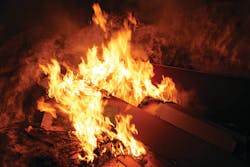Fire & Life Safety: Fire codes for various occupied institutions
Q. I get confused by the businesses that advertise as providing daycare, pre-school, child care and adult daycare services. Clearly they are similar but have some major differences—such as the various ages of their occupants and what goes on in each business. Sometimes it isn’t really a business, because some churches offer child care during their religious services for all the little kids. How does fire alarm protection differ between these different “care” buildings?
A. When determining fire alarm requirements, start by discerning what the owner had the city agree to as their “occupancy type” as defined by both the International Building Code (IBC) and the International Fire Code (IFC). The “Definitions” chapter of both codes are the same and all of the above business models you’ve listed come under the general “Occupancy Classification” of “Institutional Group I.” Since most are highly regulated, there should be no doubt by the owner as to what rules their business must follow; but you are correct, it can be complicated.
Different groups and their make up
A quick scan of the occupancy groups shown in the definition chapter of the IBC/IFC will show Group I-4, daycare facilities and under that section you’ll find Adult care and Child Care listed too. First, none of these Group I rules apply if you are related to the people being cared for by blood, marriage or adoption, regardless of their ages or how many there are. Secondly, in “day” care no one can stay longer than 24 hours. The third thing being considered is how many people are being watched. If Mother Hubbard wants to take in some kids to watch while their parents are working, she may do so as long as she takes has no more than five. With five or less her home would fall into the “Residential” (R-3) group and she would just have to follow the International Residential Code by providing smoke alarms, etc. If she watched over six or more unrelated adult persons (less than 24 hours a day) then her home would be classified as an I-4 facility. The codes also cut her a break if these adult occupants are capable of exiting without the aid of Mother or staff. Self rescue (a problem for I-Institutional groups) allows her adult care facility to be classified as an R-3, instead of an I-4.
If a business has six or more non-relatives, 2 ½ years old or less, then it is an I-4 facility. You are cut a break again, as long as you have no more than 100 kids, and each room in which the kids are cared for is on the ground level with an exit directly to the outside. If this is the case, you can be classified as a Group E-Educational and Group E facilities only require a manual fire alarm system. This also means that if you have more than 100 kids, 2 ½ years of age or less (YIKES!), you will return to the I-4 classification. While this I-4 classification is generally more stringent, there are no specific automatic smoke detector requirements in Section 907 of the IBC for I-4 occupancies!
The basic requirements can be found under the general wording for all “Group I” facilities which states that they all must have a fire alarm warning system comprised of manual pull boxes. It states in the general “Institutional Group I” section that automatic smoke detection must be added to the manual system as required by each of the I sub-groups: I-1 (group homes, drug rehab, assisted living, etc.); I-2 (hospitals, nursing and detox facilities, etc.); and I-3 (prisons, jails, etc.) sections. Looking further, you’ll find that there is no separate section for I-4 facilities, which leaves I-4 facilities with virtually the same basic manual box requirements required of public schools (E).
The IBC/IFC specifically exempts daycare facilities provided at a church during services by stating: “Places of worship during religious functions are not included.” However, if the facility had an occupant load of more than 300 persons, the church would fall under the Assembly Group (A-3) for religious buildings and is then required to have a manual fire alarm system anyway.
